Ways SEO Can Benefit Your Business: A Clear Guide
Search Engine Optimization (SEO) is an essential aspect of digital marketing that helps businesses to improve their online visibility. SEO involves optimizing a website to rank higher in search engine results pages (SERPs) for specific keywords and phrases. By doing so, businesses can attract more organic traffic to their website, build trust and credibility with their audience, and ultimately increase leads and conversions. In this article, we will explore ways SEO can benefit your business.

Understanding SEO is crucial for businesses to stay competitive in today's digital landscape. By optimizing website content and structure, businesses can improve their search engine rankings and attract more organic traffic. Quality content is key to SEO success, as it helps to establish the website's relevance and authority in the eyes of search engines. Additionally, businesses need to conduct competitor analysis and keyword research to identify the best opportunities for ranking higher in SERPs.
By implementing best practices for SEO, such as building trust and credibility, link building, and improving user experience, businesses can reap the benefits of increased organic traffic, leads, and conversions. Local SEO is also essential for small businesses to attract customers in their local area. In this article, we will explore the various ways SEO can benefit businesses and provide tips for implementing an effective SEO strategy.
Key Takeaways
- SEO can improve a business's online visibility and attract more organic traffic to their website.
- Quality content, competitor analysis, and keyword research are crucial for SEO success.
- By implementing best practices for SEO, businesses can increase leads and conversions, build trust and credibility, and improve user experience.
Understanding SEO
https://www.youtube.com/watch?v=nj-9cdtNaJg&embed=true
Search Engine Optimization (SEO) is the process of optimizing your website to increase its visibility and ranking on search engine results pages (SERPs). SEO involves making changes to your website's design, content, and structure to make it more attractive to search engines and users.
One of the primary goals of SEO is to improve the ranking of your website on search engines like Google. By optimizing your website for specific keywords and phrases, you can increase your chances of appearing on the first page of search results for those keywords, which can lead to more traffic and potential customers.
To achieve this, SEO professionals use a variety of techniques, including keyword research, on-page optimization, link building, and technical SEO. Keyword research involves identifying the keywords and phrases that your target audience is searching for, and then optimizing your website's content to include those keywords.
On-page optimization involves making changes to your website's content and structure to make it more search engine-friendly. This includes optimizing your website's title tags, meta descriptions, headers, and content to include relevant keywords and phrases.
Link building involves acquiring high-quality backlinks from other websites to improve your website's authority and ranking on search engines. Technical SEO involves optimizing your website's technical elements, such as its site speed, mobile-friendliness, and security, to improve its ranking on search engines.
Overall, SEO is an essential part of any digital marketing strategy, and it can provide numerous benefits to your business, including increased visibility, traffic, and revenue. By understanding the basics of SEO and implementing effective strategies, you can improve your website's ranking on search engines and attract more potential customers.
Importance of Quality Content
https://www.youtube.com/watch?v=XVO3XeRIM54&embed=true
In the world of SEO, quality content is king. It is the foundation of a successful SEO strategy. Quality content is not only important for your website visitors, but it is also important for search engines. In this section, we will discuss the importance of quality content and how it can benefit your business.
Content Creation
Creating high-quality content is the first step in any content marketing strategy. Quality content is original, relevant, and valuable to your target audience. It should be well-written, informative, and engaging. When you create quality content, you are establishing your brand as an authority in your industry. This can lead to increased brand awareness, website traffic, and conversions.
Blogging
Blogging is one of the most effective ways to create quality content for your website. By regularly publishing blog posts, you can keep your website fresh and up-to-date. Blogging also provides an opportunity to target long-tail keywords and answer frequently asked questions. This can help improve your website's search engine rankings and drive more organic traffic to your site.
Infographics
Infographics are a powerful visual tool that can help you communicate complex information in a simple and engaging way. They are highly shareable and can help increase your website's visibility and backlink profile. Infographics can also help establish your brand as an authority in your industry and improve your website's search engine rankings.
In summary, quality content is essential for any successful SEO strategy. It can help improve your website's search engine rankings, drive more organic traffic to your site, and establish your brand as an authority in your industry. By focusing on content creation, blogging, and infographics, you can create high-quality content that resonates with your target audience and helps you achieve your business goals.
Boosting Organic Traffic
https://www.youtube.com/watch?v=VGyCeKbI9P0&embed=true
One of the biggest benefits of SEO for a business is the ability to increase organic traffic to its website. Organic traffic refers to the visitors who arrive at a website through search engine results pages (SERPs) without clicking on a paid advertisement.
By improving a website's search engine ranking for relevant keywords, SEO helps to increase organic search traffic. This type of traffic is high-quality because it is made up of people who are actively searching for products or services related to the business.
To boost organic traffic, businesses can use a variety of SEO techniques such as:
- Conducting keyword research to identify the most relevant and high-traffic keywords for their business
- Optimizing website content to include these keywords in a natural and meaningful way
- Creating high-quality content that is valuable and engaging for the target audience
- Building backlinks from other reputable websites to increase the website's authority and credibility
- Improving website speed and user experience to reduce bounce rates and keep visitors on the site for longer
By implementing these techniques, businesses can improve their organic search ranking and attract more high-quality traffic to their website. This can lead to increased brand awareness, higher conversion rates, and ultimately, more revenue for the business.
Overall, boosting organic traffic through SEO is a crucial strategy for any business looking to succeed online.
Competitor Analysis
https://www.youtube.com/watch?v=UEpNM5yvyh8&embed=true
One of the most important aspects of SEO is understanding your competition. Competitor analysis is the process of studying your industry's competitive landscape to understand competitor strategies and leverage those insights to improve your own SEO performance. By analyzing your competitors, you can identify their strengths and weaknesses and gain a better understanding of what works and what doesn't in your industry.
One of the main benefits of conducting a competitor analysis is that it allows you to learn from your competitors' success and develop a more effective SEO strategy. By analyzing your competitors' websites, you can identify the keywords they are targeting, the content they are producing, and the backlinks they are earning. This information can help you optimize your own website and content to better target the same keywords and attract the same backlinks.
Another benefit of competitor analysis is that it allows you to capitalize on your competitors' weaknesses. By identifying areas where your competitors are struggling, you can focus on those areas and gain a competitive advantage. For example, if your competitors are not targeting a particular keyword, you can focus on that keyword and potentially rank higher in the search results.
Competitor analysis can also help you understand what SEO tasks to prioritize going forward. By analyzing your competitors' SEO strategies, you can identify which tasks are most important and which can be deprioritized. For example, if your competitors are focusing heavily on content marketing, you may want to prioritize your own content marketing efforts to stay competitive.
Overall, competitor analysis is an essential component of any effective SEO strategy. By analyzing your competitors and understanding the competitive landscape, you can better optimize your own website and content to improve your search engine rankings and gain market share in your industry.
Keyword Research
https://www.youtube.com/watch?v=QagqtYwtqdc&embed=true
Keyword research is a fundamental component of SEO. It involves identifying the words and phrases that people use to search for information, products, or services online. By understanding the keywords that your target audience uses, you can optimize your website content, improve your search engine rankings, and attract more traffic to your site.
Keyword research helps you to identify the search queries that your potential customers use to find your products or services. By analyzing these search queries, you can determine the intent behind them. This information is crucial for creating content that meets the needs of your target audience and aligns with their search intent.
Effective keyword research can also help you to identify new opportunities for content creation. By analyzing the keywords that your competitors are using, you can identify gaps in the market and create content that fills those gaps. This can help you to attract new customers and increase your online visibility.
Keyword research tools can assist you in generating new content ideas. Sometimes it can be challenging to think of new content ideas for your blog. Luckily, most keyword research tools can be used to find new keywords and content ideas. By plugging in your competitor's domain, you can find all of the keywords that they are ranking for, and use this information to create new content ideas.
In conclusion, keyword research is an essential component of SEO. It helps you to understand the search queries that your target audience uses, and the intent behind those queries. By using this information to optimize your website content, you can attract more traffic to your site, and increase your online visibility.
Building Trust and Credibility
https://www.youtube.com/watch?v=6e36bxQsbWY&embed=true
One of the key benefits of SEO is that it helps businesses build trust and credibility with their target audience. When a website appears at the top of search engine results pages, it is seen as a high-quality and trustworthy source of information. This, in turn, can help businesses establish themselves as industry leaders and attract more customers.
To build trust and credibility online, businesses need to focus on a few key areas. One of the most important is reviews. Customer reviews are an essential part of building trust and credibility with potential customers. Positive reviews can help businesses establish themselves as trustworthy and reliable, while negative reviews can damage their reputation. By encouraging customers to leave reviews and responding to them in a timely and professional manner, businesses can demonstrate their commitment to customer satisfaction and build trust with their audience.
Another important factor in building trust and credibility is having a strong online reputation. This means having a website that is well-designed, easy to navigate, and provides valuable information to visitors. It also means having a strong social media presence and actively engaging with customers on platforms like Facebook, Twitter, and Instagram. By demonstrating their expertise and providing helpful information to their audience, businesses can establish themselves as trustworthy and authoritative sources of information.
Finally, businesses can build trust and credibility by being transparent and honest in their marketing efforts. This means avoiding exaggerated or false claims and being upfront about any limitations or drawbacks of their products or services. By being honest and transparent, businesses can establish themselves as trustworthy and build long-term relationships with their customers.
Overall, building trust and credibility is essential for businesses that want to succeed in today's competitive marketplace. By focusing on areas like reviews, online reputation, and transparency, businesses can establish themselves as trustworthy and reliable sources of information and attract more customers to their website.
Link Building
https://www.youtube.com/watch?v=yny5Hq2d85E&embed=true
Link building is a crucial aspect of SEO that involves acquiring hyperlinks from other websites to your own. These links serve as a way for users to navigate between pages on the internet and help search engines crawl the web. In SEO, the main purpose of link building is to boost a webpage's search rankings by acquiring high-quality inbound links.
One of the key benefits of link building is that it helps to increase your website's credibility. A site that ranks high on search engine results pages is typically considered high-quality and trustworthy by search engines. This, in turn, boosts the credibility of your website and can lead to more traffic, leads, and revenue for your business.
There are several popular link building strategies that businesses can use to acquire high-quality inbound links. These include:
- Content marketing: Creating high-quality content that other websites will want to link to.
- Guest blogging: Publishing articles on other websites that link back to your own.
- Broken link building: Finding broken links on other websites and offering to replace them with links to your own content.
- Influencer outreach: Reaching out to influencers in your industry and asking them to link to your content.
It's important to note that link building should be done ethically and naturally. Google penalizes websites that engage in manipulative link building practices such as buying links or participating in link schemes. Instead, businesses should focus on creating high-quality content and building relationships with other websites in their industry to acquire links naturally.
Overall, link building is an essential component of SEO that can help businesses to increase their website's credibility, search rankings, and traffic. By using ethical and natural link building strategies, businesses can improve their online presence and attract more potential customers to their website.
User Experience
https://www.youtube.com/watch?v=4mpksvyLs68&embed=true
User experience (UX) is a crucial factor in search engine optimization (SEO) and can have a significant impact on the success of a website. Good UX can lead to increased engagement, higher conversion rates, and ultimately, better search engine rankings.
One of the most important aspects of UX is navigation. A well-designed navigation system can make it easy for users to find what they are looking for and can keep them on the site longer. This, in turn, can lead to higher engagement and lower bounce rates. A good navigation system should be intuitive, easy to use, and provide clear labels and categories.
Another important aspect of UX is mobile-friendliness. With more and more people accessing the internet on mobile devices, having a mobile-friendly website is essential. A mobile-friendly site is one that is optimized for smaller screens, loads quickly, and is easy to navigate with a touch screen. Google has even introduced mobile-first indexing, which means that they use the mobile version of a site for indexing and ranking purposes.
Interactivity is also an important aspect of UX. Websites that provide interactive features such as quizzes, polls, and surveys can increase engagement and keep users on the site longer. This can lead to higher conversion rates and better search engine rankings.
Overall, a good user experience is essential for SEO success. Websites that provide a positive user experience are more likely to rank higher in search engine results pages (SERPs) and attract more visitors to their site. By focusing on navigation, mobile-friendliness, and interactivity, businesses can improve their UX and reap the benefits of better search engine rankings and increased engagement.
Increasing Leads and Conversions
https://www.youtube.com/watch?v=qBP0zjopruM&embed=true
One of the most significant benefits of SEO is the ability to increase leads and conversions for your business. By optimizing your website and content for search engines, you can attract more potential customers to your site and increase your chances of converting them into paying customers.
SEO can help improve your close rate by ensuring that the traffic coming to your site is highly targeted and relevant. This means that the visitors who arrive at your site are more likely to be interested in your products or services, and therefore more likely to convert into customers.
In addition to attracting more qualified traffic to your site, SEO can also help improve your conversion rate by optimizing your site for user experience. By ensuring that your site is easy to navigate, loads quickly, and provides a seamless experience for users, you can increase the likelihood that visitors will stay on your site and take the desired action.
Furthermore, SEO can help increase your return on investment (ROI) by providing a cost-effective way to attract high-quality leads and customers. Unlike traditional advertising methods, which can be expensive and difficult to track, SEO provides a measurable and scalable way to drive traffic and conversions to your site.
Overall, if you want to increase leads and conversions for your business, investing in SEO is a smart choice. By optimizing your site and content for search engines, you can attract more qualified traffic to your site, improve your close rate, and increase your ROI.
Local SEO
https://www.youtube.com/watch?v=nqvKiXyUdRY&embed=true
Local SEO is a powerful tool for businesses that want to reach customers in their area. By optimizing your website and online presence for local searches, you can increase your visibility and attract more customers to your business. Local SEO is particularly important for small businesses that rely on local customers to drive sales.
One of the key benefits of local SEO is that it can help you rank higher in local search results. This means that when someone searches for a product or service in your area, your business is more likely to appear at the top of the results. This can lead to more traffic to your website and more customers for your business.
Google My Business is an essential tool for local SEO. By creating a Google My Business profile, you can provide customers with important information about your business, such as your address, phone number, and hours of operation. You can also include photos and reviews to help customers get a better sense of what your business is all about.
Another important aspect of local SEO is optimizing your website for local searches. This includes using location-specific keywords in your content and meta tags, as well as creating location-specific pages on your website. By doing so, you can help ensure that your website appears in local search results when someone searches for a product or service in your area.
In summary, local SEO is a powerful tool for businesses that want to attract more local customers. By optimizing your website and online presence for local searches, you can increase your visibility and attract more customers to your business. With the help of tools like Google My Business, you can ensure that your business is easily found by customers in your area.
Benefits of SEO for Small Businesses
https://www.youtube.com/watch?v=0uUjafNSVFA&embed=true
SEO can provide numerous benefits for small businesses, helping them grow and succeed in the competitive online market. Here are some of the key benefits of SEO for small businesses:
Increased Website Traffic
One of the most significant benefits of SEO for small businesses is increased website traffic. By optimizing your website for search engines, you can improve your website's ranking on search engine results pages (SERPs). This means that your website will be more visible to potential customers who are searching for products or services related to your business.
Improved User Experience
SEO involves optimizing your website's structure, content, and design to make it more user-friendly. This can help improve the overall user experience on your website, making it easier for visitors to navigate and find what they're looking for. A better user experience can lead to increased engagement, more time spent on your website, and ultimately, more conversions.
Cost-Effective Marketing
Compared to other forms of marketing, such as paid advertising, SEO can be a cost-effective way for small businesses to promote their products and services. While SEO requires an initial investment of time and resources, the long-term benefits can be significant, helping small businesses achieve sustainable growth and success.
Increased Credibility
A website that ranks high on SERPs is typically considered high-quality and trustworthy by search engines. This, in turn, can help increase your business's credibility and reputation among potential customers. By investing in SEO, small businesses can establish themselves as credible and trustworthy sources of information, products, and services in their respective industries.
Business Growth
Ultimately, the goal of SEO for small businesses is to drive business growth. By increasing website traffic, improving user experience, and establishing credibility, SEO can help small businesses attract new customers, retain existing ones, and ultimately grow their business over time.
SEO Best Practices
https://www.youtube.com/watch?v=MYE6T_gd7H0&embed=true
To achieve the best results from SEO efforts, it is essential to follow best practices. These practices are constantly evolving as search engines update their algorithms, and it is important to stay up to date with the latest developments.
One of the most important best practices is to create high-quality, relevant content that provides value to the user. This can include blog posts, videos, infographics, and more. It is important to use relevant keywords in the content, but not to overdo it, as this can lead to penalties from search engines.
Another best practice is to ensure that the website is optimized for mobile devices. With more and more people accessing the internet on their smartphones and tablets, having a mobile-friendly website is essential. This includes using responsive design, optimizing page load times, and ensuring that all content is accessible on mobile devices.
In addition to these best practices, it is important to stay up to date with algorithm updates from search engines. For example, Google recently introduced core web vitals as a ranking factor, which includes factors such as page load speed, interactivity, and visual stability. Keeping up with these updates and making necessary changes to the website can help improve search engine rankings.
Overall, following SEO best practices can help businesses improve their search engine rankings and attract more traffic to their website. By creating high-quality content, optimizing for mobile devices, and staying up to date with algorithm updates, businesses can achieve long-term success with SEO.
SEO Tools
https://www.youtube.com/watch?v=9ak2bQDq-VU&embed=true
One of the key benefits of SEO is that it provides businesses with a wealth of data and insights into their website's performance. This data can be used to make informed decisions about how to optimize the website further and improve its visibility in search engine results pages (SERPs). There are several SEO tools available that businesses can use to gain these insights and make data-driven decisions.
Google Analytics
Google Analytics is a free tool provided by Google that businesses can use to track website traffic and user behavior. It provides a wealth of data, including the number of visitors, their location, the pages they visit, and how long they stay on each page. This data can be used to identify which pages are performing well and which ones need improvement. Google Analytics also provides insights into the sources of traffic, including organic search, paid search, and social media.
Ahrefs
Ahrefs is a comprehensive SEO tool that provides businesses with a range of features, including keyword research, backlink analysis, and competitor analysis. It allows businesses to track their website's performance over time and identify areas for improvement. Ahrefs provides detailed reports on keyword rankings, search volume, and traffic potential, making it a valuable tool for businesses looking to improve their search engine visibility.
Moz
Moz is another popular SEO tool that provides businesses with a range of features, including keyword research, site audits, and link building. It allows businesses to track their website's performance over time and identify areas for improvement. Moz provides detailed reports on keyword rankings, search volume, and traffic potential, making it a valuable tool for businesses looking to improve their search engine visibility.
SEMrush
SEMrush is a comprehensive SEO tool that provides businesses with a range of features, including keyword research, site audits, and competitor analysis. It allows businesses to track their website's performance over time and identify areas for improvement. SEMrush provides detailed reports on keyword rankings, search volume, and traffic potential, making it a valuable tool for businesses looking to improve their search engine visibility.
In conclusion, SEO tools provide businesses with valuable insights into their website's performance and help them make data-driven decisions to improve their search engine visibility. Google Analytics, Ahrefs, Moz, and SEMrush are just a few of the many SEO tools available that businesses can use to gain these insights.
SEO vs PPC
https://www.youtube.com/watch?v=oxb1Rra5WU4&embed=true
When it comes to digital marketing, businesses have two primary options to increase their visibility in search engine results: Search Engine Optimization (SEO) and Pay-per-click (PPC) advertising. Both methods have their advantages and disadvantages, and it's important to understand the differences to choose the best option for your business.
SEO
SEO is a long-term strategy that involves optimizing your website's content, structure, and code to improve its ranking in organic search engine results. It takes time to see results from SEO, but the benefits can last for years. SEO is also cost-effective compared to PPC campaigns, as it does not require a constant stream of advertising dollars.
SEO is a good option for businesses that want to establish a strong online presence and improve their brand awareness. It's also a good option for businesses that have a limited budget for advertising.
PPC
PPC is a short-term strategy that involves paying for ads to appear at the top of search engine results. Businesses bid on keywords related to their product or service and pay each time someone clicks on their ad. PPC campaigns can be expensive, but they can provide immediate results.
PPC is a good option for businesses that want to generate leads quickly or have a specific promotion or event they want to advertise. It's also a good option for businesses that have a large advertising budget and want to maximize their exposure.
Which is Better?
The answer to this question depends on your business's goals and budget. SEO is a good long-term strategy for businesses that want to establish a strong online presence and improve their brand awareness. PPC is a good short-term strategy for businesses that want to generate leads quickly or have a specific promotion or event they want to advertise.
Ultimately, a combination of both SEO and PPC can be the most effective way to drive traffic to your website and increase your online visibility. By using both strategies, you can maximize your advertising dollars and reach a wider audience.
Long-Term Benefits of SEO
https://www.youtube.com/watch?v=dVg_URgC9qA&embed=true
SEO is not a quick-fix solution for your business, but rather a long-term investment with numerous benefits. In the long run, SEO can help your business achieve its goals and objectives by increasing visibility, traffic, and conversions.
One of the most significant long-term benefits of SEO is increased organic traffic. By optimizing your website for search engines, you can attract more visitors to your site over time. This traffic is more sustainable than paid advertising because it does not require constant investment. Organic traffic also tends to have a lower bounce rate, which means visitors are more likely to engage with your content and convert into customers.
Another long-term benefit of SEO is improved brand awareness and credibility. When your website ranks higher in search engine results, it sends a signal to potential customers that your business is reputable and trustworthy. This can lead to increased brand recognition and customer loyalty over time.
SEO can also help your business achieve its long-term goals by aligning with your overall business strategy. By identifying the right keywords and optimizing your content, you can attract the right audience and increase conversions. This can help you achieve your business objectives, such as increasing sales, expanding your customer base, or improving customer retention.
Overall, SEO is a valuable long-term investment for any business looking to improve its online presence and achieve its business goals. By focusing on sustainable growth and optimization, businesses can reap the benefits of increased visibility, traffic, and conversions over time.
Conclusion

In conclusion, SEO is an essential tool for any business looking to improve its online presence. By optimizing their website for search engines, businesses can increase their visibility, engagement, and revenue. SEO is also a cost-effective way to reach a target audience and improve the user experience on their webpage.
Through the use of relevant text, meta descriptions, and other on-page optimization techniques, businesses can improve their SERP rankings and drive more traffic to their web pages. This increased visibility can result in higher engagement rates and ultimately lead to more conversions and revenue.
In addition, SEO can help businesses stay ahead of their competition by ensuring their website is up-to-date and relevant to their target audience. By monitoring their website's analytics and making necessary adjustments, businesses can continue to improve their online presence and maintain their position in search engine rankings.
Overall, SEO is a powerful tool that can benefit businesses of all sizes and industries. By investing in SEO, businesses can improve their online visibility, engage with their target audience, and ultimately increase their revenue.
Frequently Asked Questions

How does SEO impact your business?
SEO impacts a business in several ways. It helps to increase the visibility of a website on search engines, which leads to more traffic and potential customers. It also helps to establish credibility and trust with customers since businesses that rank higher on search engines are considered more trustworthy. Additionally, SEO can help businesses stay ahead of their competitors and increase their revenue.
What are the top benefits of SEO?
The top benefits of SEO include increased visibility, credibility, and trust with customers, improved user experience, higher website traffic, and increased revenue. SEO can also help businesses stay ahead of their competitors and establish themselves as industry leaders.
What are some effective SEO techniques for businesses?
Some effective SEO techniques for businesses include keyword research, on-page optimization, link building, and content creation. Keyword research helps businesses identify the most relevant keywords for their industry, while on-page optimization involves optimizing website content, meta tags, and images. Link building involves acquiring high-quality links from other websites, and content creation involves creating high-quality, relevant content that engages customers.
What are the advantages and disadvantages of SEO?
The advantages of SEO include increased visibility, credibility, and trust with customers, improved user experience, higher website traffic, and increased revenue. However, the disadvantages of SEO include the time and resources required to implement effective SEO strategies and the constantly changing nature of search engine algorithms.
What are the challenges of implementing SEO for a business?
The challenges of implementing SEO for a business include understanding and keeping up with constantly changing search engine algorithms, identifying and targeting the most relevant keywords, and creating high-quality, relevant content that engages customers. Additionally, businesses may face competition from other businesses and may need to invest significant time and resources to implement effective SEO strategies.
Where should businesses apply SEO?
Businesses should apply SEO on their website, social media platforms, and other online channels to increase visibility and reach more potential customers. Additionally, businesses should focus on creating high-quality, relevant content that engages customers and helps establish credibility and trust with them.

Tim Moseley
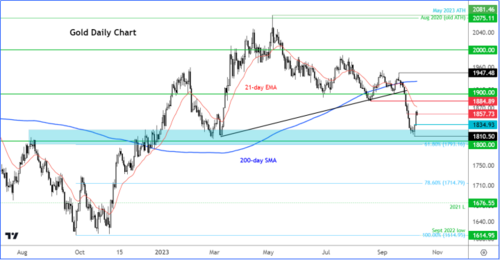
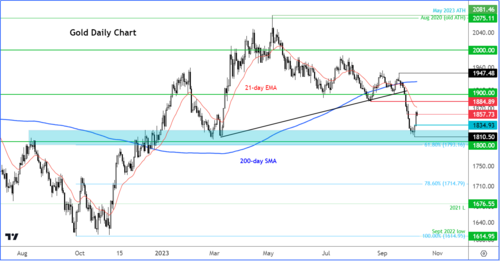







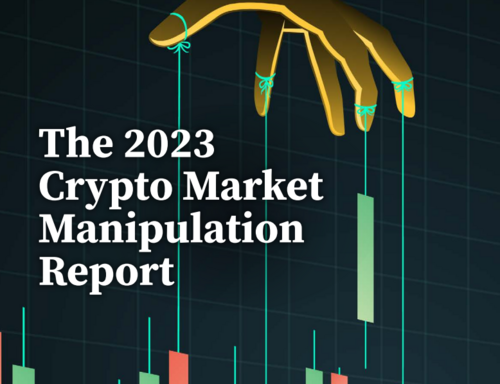






 Bond yields can't keep gold down forever as ING sees higher prices in 2024
Bond yields can't keep gold down forever as ING sees higher prices in 2024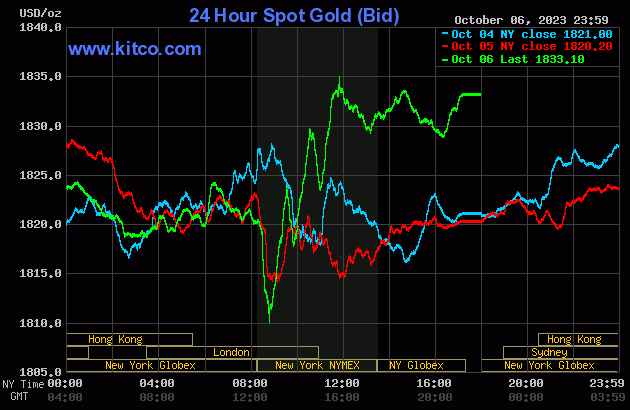
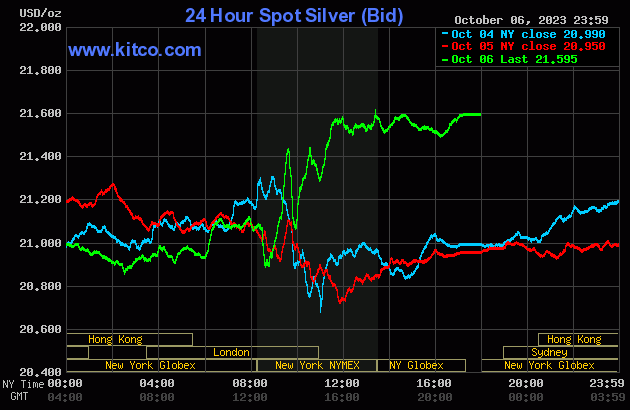
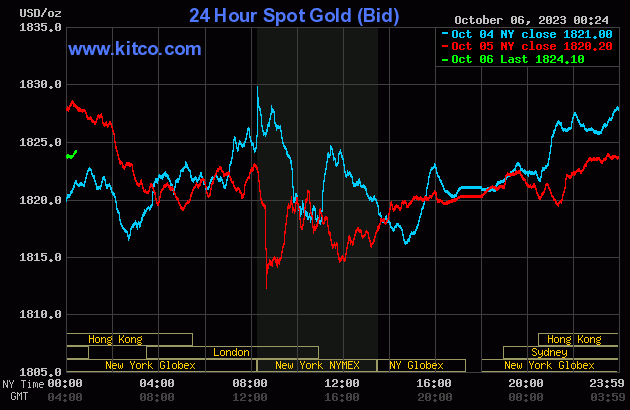
 Central banks buy 77 tonnes of gold, helping the precious metal resist rising bond yields
Central banks buy 77 tonnes of gold, helping the precious metal resist rising bond yields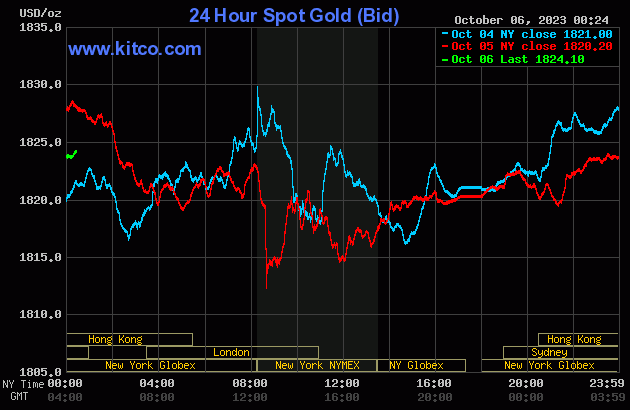
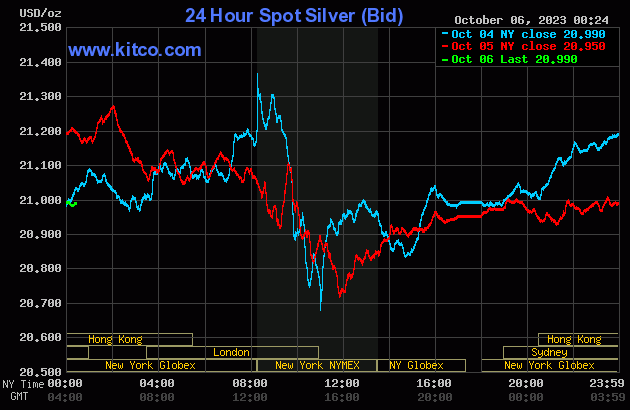
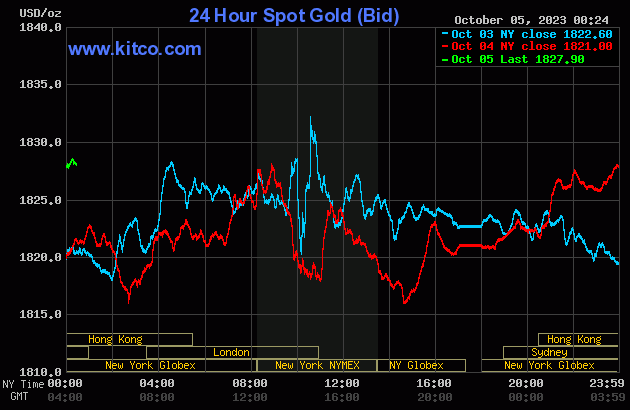
 Nervous crypto investors gain comfort via total return approach instead of only chasing price gains
Nervous crypto investors gain comfort via total return approach instead of only chasing price gains
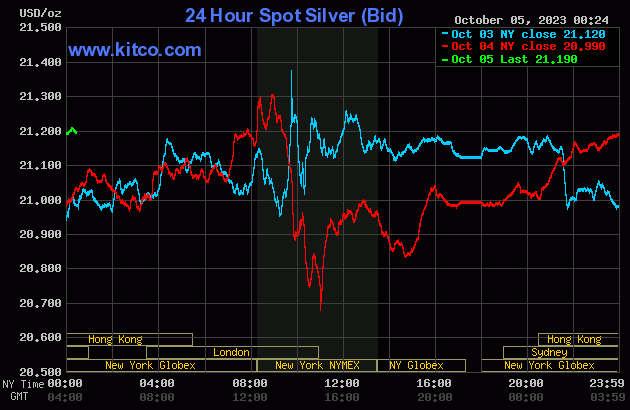
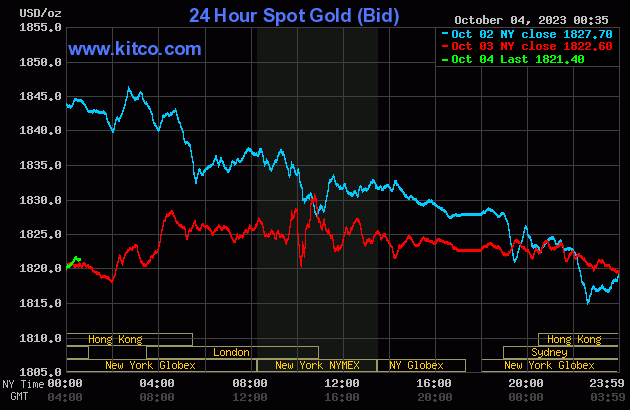
 The Fed to hike rates again in November, rate cuts coming only in 2025, here's why – Pat LaVecchia
The Fed to hike rates again in November, rate cuts coming only in 2025, here's why – Pat LaVecchia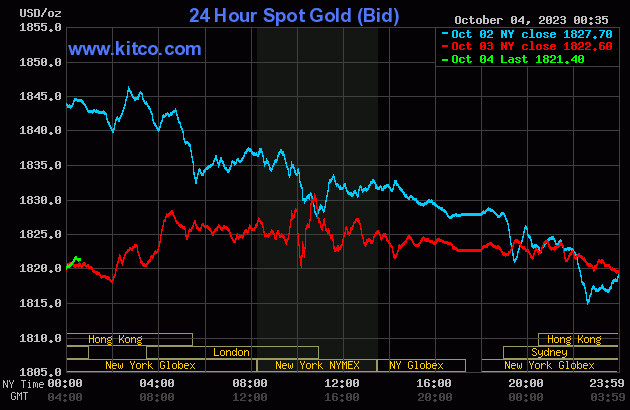
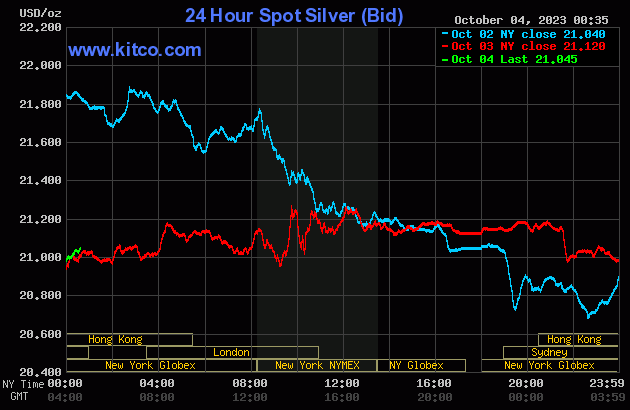



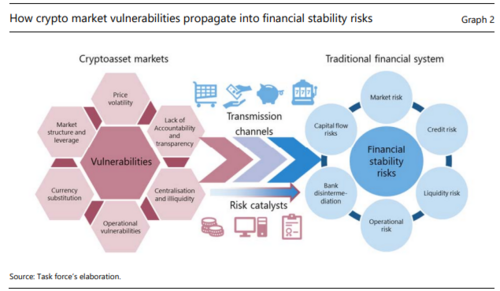
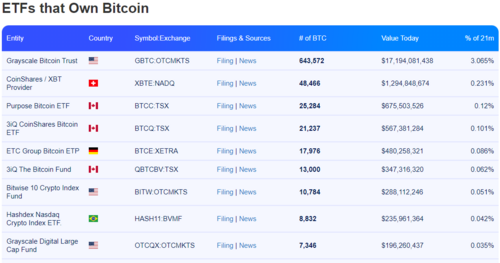
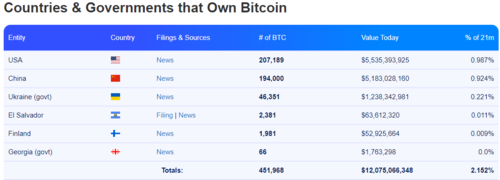
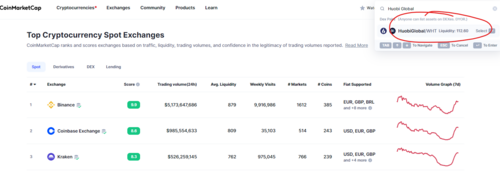
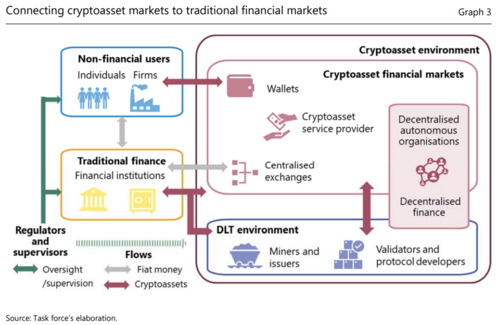
(34).gif)
